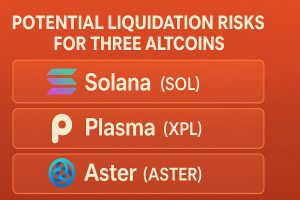Ethereum continues to be a focal point for investors and analysts looking towards the future of cryptocurrencies. Recent market trends and technological developments have sparked a variety of predictions about where ETH might be headed over the next several years. As the second-largest cryptocurrency by market capitalization, Ethereum’s price movements are closely monitored by traders and institutional investors alike.
Over the past few years, Ethereum has experienced significant volatility, driven by factors such as network upgrades, regulatory developments, and broader macroeconomic trends. The transition to Ethereum 2.0, which aims to improve scalability and reduce energy consumption through proof-of-stake, has been a pivotal development that has influenced market sentiment. Many analysts believe that these upgrades could lead to increased adoption and higher valuation in the future.
The recent price analysis suggests that Ethereum’s value could significantly increase by 2025, with some predictions estimating a potential surge driven by widespread adoption of decentralized applications (dApps) and the growth of the non-fungible token (NFT) market. By 2026, experts are optimistic that Ethereum could reach new all-time highs, supported by continuous network improvements and a broader acceptance of blockchain technology.
Looking further ahead, forecasts for 2030 project that Ethereum might become a dominant platform for decentralized finance (DeFi) and enterprise blockchain solutions. This could lead to substantial price appreciation, possibly making ETH a key asset in the digital economy.
The implications of these predictions are substantial for investors, as they could influence portfolio allocations and trading strategies. While some analysts warn of potential risks, such as regulatory crackdowns or technical setbacks, the overall outlook remains cautiously optimistic.
Market watchers will need to keep an eye on upcoming developments, including major network upgrades, partnerships with traditional financial institutions, and regulatory changes that could impact Ethereum’s future trajectory.
What is the main factor influencing Ethereum’s future price?
The main factor is the ongoing development and adoption of Ethereum 2.0, which aims to improve scalability, security, and sustainability, making the platform more attractive for developers and investors.
Could regulatory issues affect Ethereum’s growth?
Yes, regulatory crackdowns or unfavorable legislation could hinder Ethereum’s adoption and price growth, especially if governments impose restrictions on cryptocurrency trading or usage.
What role does technological innovation play in Ethereum’s future?
Technological advancements, like scaling solutions and new DeFi applications, are crucial as they can enhance Ethereum’s utility and drive demand, ultimately boosting its value over the coming years.







